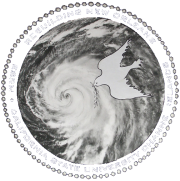Woodland 1837
The Woodland Plantation and Spirits Hall recently went through a name change; it is now called Woodlands 1837 after the year it was established. As per the name, Woodland 1837 used to be a plantation 40 minutes south of New Orleans in Point Sulphur, Louisiana. Before the Louisiana Purchase in 1803, the land this plantation stands on now was French territory. In 1793, Captain William Johnson and his partner George Bradish built a home, the Magnolia plantation, 4 miles south of Woodland 1837. Captain Johnson and George Bradish were sea pirates/captains from Nova Scotia who came down the Deep Delta in the 1700s. Both Captain Johnson and Bradish’s families lived on Magnolia for about 40 years until Captain Johnson sold his shares of Magnolia. With those funds he built the Woodland Plantation. Captain Johnson also partnered with the famous pirate Jean Lafitte. Laffitte would bring slaves up Grand Bayou through a short cut to the Gulf of Mexico from Woodland. Four large two-story brick slave quarters were built to house the slaves brought by ship and sold by Captain Johnson and Bradish. These buildings were established on the grounds that would eventually be known as the Woodland Plantation built by Captain Johnson.
Captain Johnson along with his 4 sons built what is now known as Woodland 1837. It became a flourishing sugar cane plantation with one of the most modern mills during its time. This is due to the labor of the enslaved that helped found the extensive wealth that the sugar cane plantation accomplished. George Washington Johnson, Captain Johnson’s son, inherited the plantation after his father’s death in 1849. During the 1850 slave census, he owned 181 slaves. Before Johnson inherited the property from his father, four large two-story brick slave quarters were built to house the slaves brought by ship by Lafitte and sold by Captain Johnson and Bradish. These buildings were established on the grounds that would eventually be known as the Woodland Plantation built by Captain Johnson. Although, these quarters were eventually swept away in the early 1960s by hurricane Betsy. The only original building that stands on Woodland 1837 is the Big (main) House. The now owner, Foster Creppel, and his family moved old buildings that would have otherwise been condemned and destroyed to the property. It was a way of preserving history through the buildings that were original to the time of the plantation. But the difference is that Creppel wanted these buildings to heal and be used for a better future. Woodland 1837 became a bed and breakfast for fishers and curious visitors.












